

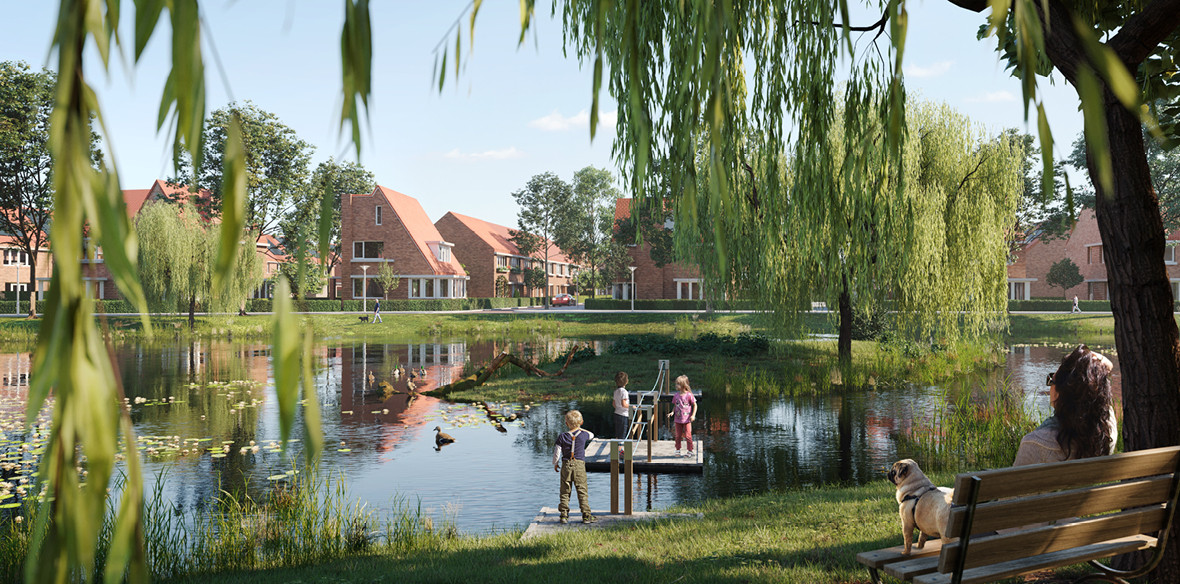
With the development of the Vrijlandt Garden Village, Rotterdam will become home to yet another energy-neutral district. Vrijlandt builds on the principles of the 19th-century garden village while also providing an answer to the specific challenges of our time, namely inclusivity, new mobility, circularity, biodiversity preservation and climate adaptation. Karres and Brands was commissioned by Ballast Nedam to devise an urban plan and public space design.
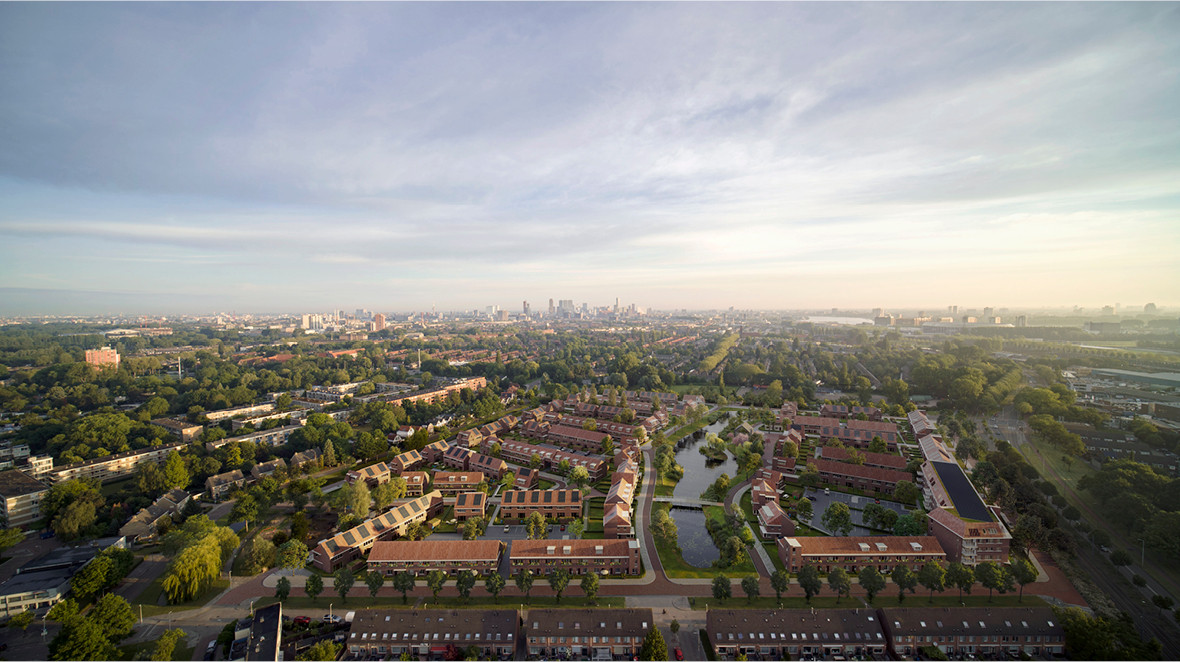
Designing a new garden village
The original garden village concept is based on a healthy living environment, the promotion of community spirit and fascinating eye-level staging. The adjacent Vreewijk, designed by H.P. Berlage and Grandpré Molière, serves as an excellent example of this. The Vrijlandt Garden Village will be a new chapter in Vreewijk’s history. It is optimally connected to the surrounding areas via new bike routes, neighbourhood facilities, two new bridges and a tram stop. The plan consists of 240 houses and 50 apartments.
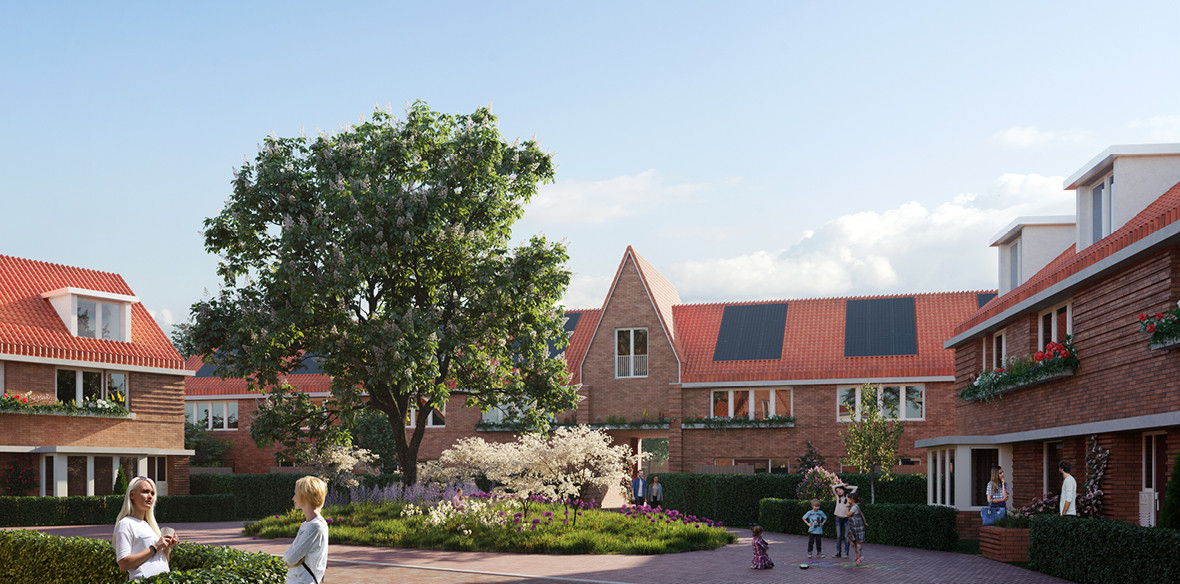
At the heart of the plan is a new canal surrounded by communal facilities such as a neighbourhood greenhouse, a cherry garden and a playground island. A variety of intimate streets run perpendicular to the canal, and thanks to subtle differences in landscaping and architecture, each street has its own character. From each street, the eye is drawn to a house across the water. The streetscape is determined by large lines, front gardens with hedges and a variety of tree species. In order to increase the recognizability of individual streets, each one has a dominant tree species. In addition, various types of hedges will be planted around the front gardens, enhancing the greenness of the streets. The continuous hedges in the back and the architecturally integrated flower boxes create an overall appearance that is lush and garden-like.
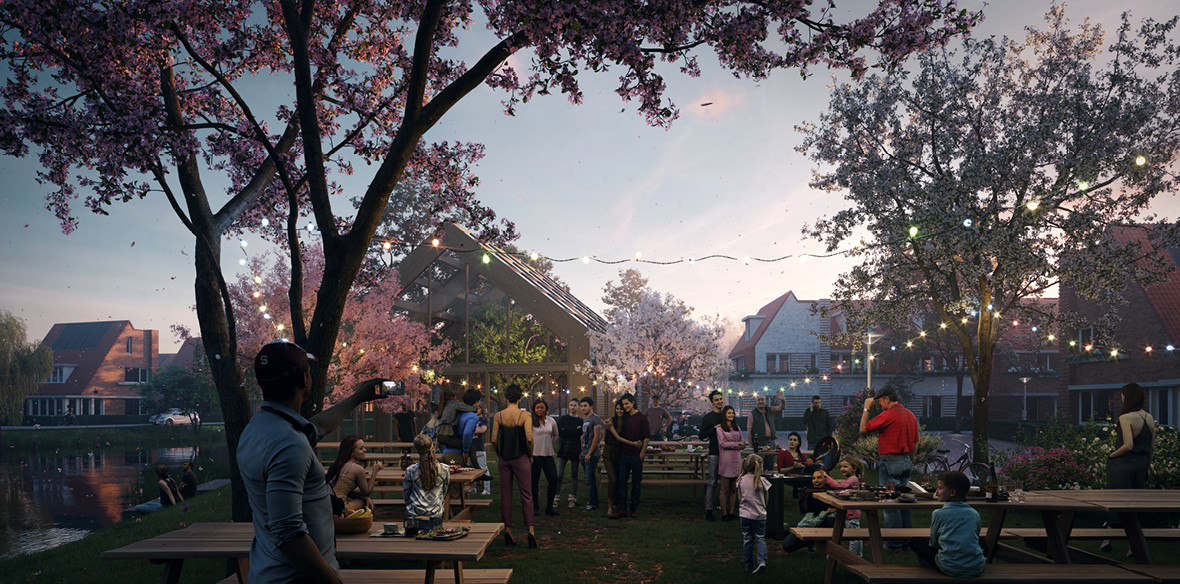
Car parking areas are, for the most part, not visible from the inner courtyards. This gives the streets a car-free, small-scale and green character. The chosen parking solution actually adds to the garden village concept, creating atmospheric and meaningful places that are an extension of the private home and garden. The elaboration of the public space and architecture is based on the primary characteristics of a garden village, including front gardens, hedges and architectural elements such as gates, bay windows, red roofs and intricate brickwork.

Designed for the 21st century
Our public space design is climate-adaptive and child-friendly. Playfulness will be brought to the landscape in a variety of ways, and every street will have wide sidewalks. By including elements like nesting boxes for birds in the façades and hedgehog houses under storage areas, the design also contributes to a rich biodiversity. The starting point for the entire plan is energy neutrality. Solar panels will be installed on top of storage sheds and on the rear sides of roofs, out of sight from the streets. Through all these interventions, the new garden village will respond to the challenges of the 21st century.
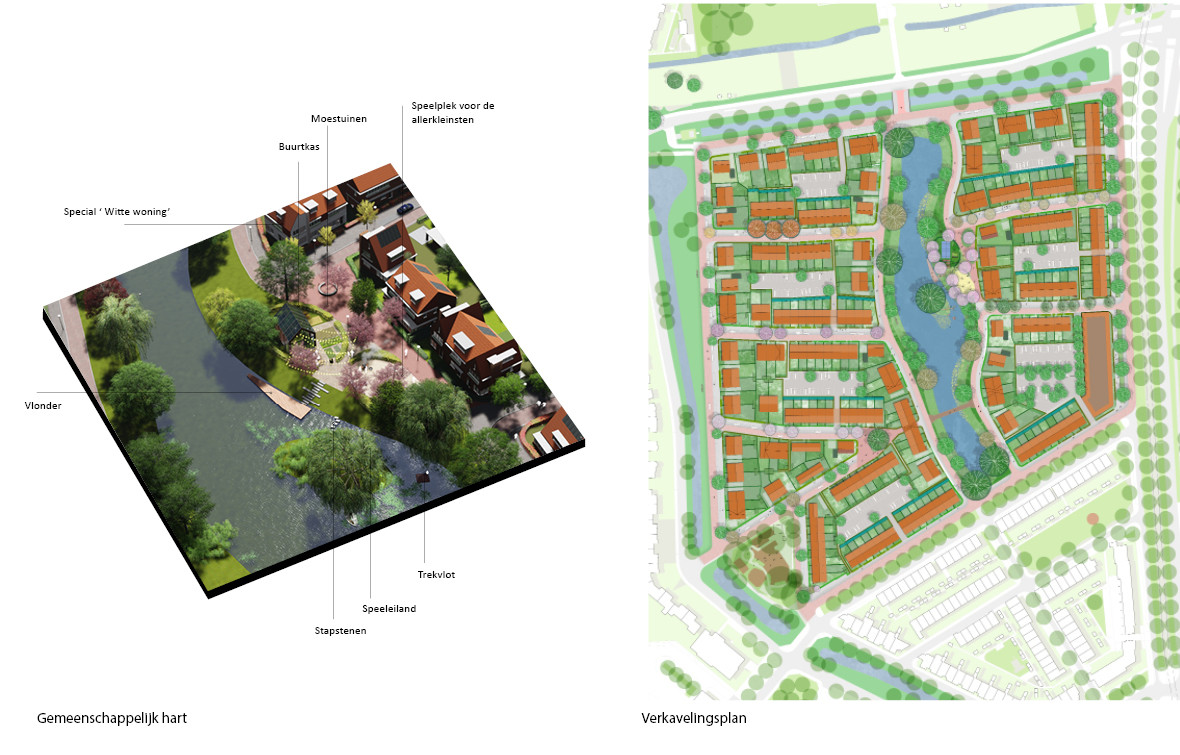




| Location. | Rotterdam, The Netherlands |
|---|---|
| Assignment | Urban plan en public space design |
| Size | 7,7 ha / 290 dwellings |
| Design | 2019 - now |
| Construction | 2021 - now |
| Status | Competion 1st prize |
| Client | Ballast Nedam |
| In collaboration with | KOW Architecten, Winters & ©️ |
| Copyright images | VERO Digital |